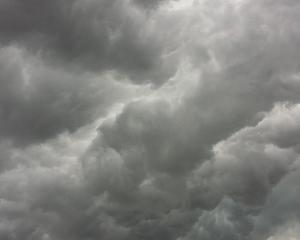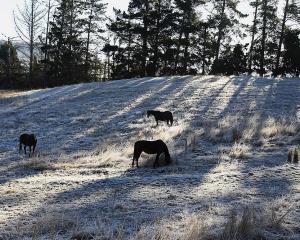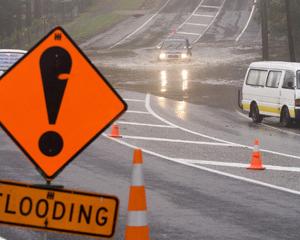Farmers are being cautioned to prepare contingency plans amid early signs of a large El Nino climate event this year.
In New Zealand, the ocean-driven system typically brings cooler, wetter conditions, bringing higher rainfall to regions that are normally wet, and often drought to areas that are usually dry.
The National Institute of Water and Atmosphere has given a 50 per cent chance of an El Nino developing over winter, while international forecasts have put the probability of one arriving by the end of the year as high as 80 per cent.
Federated Farmers adverse events spokeswoman Katie Milne saw the picture as cause for vigilance.
"Farmers do need to be aware it is getting to be more of a stronger prediction than just a hint - and to be thinking about what happened in affected areas in those years when we had strong El Ninos," she said.
"It would be advisable to start thinking about whether they need a plan about what they need to do if the worst does come to pass."
In El Ninos, farmers in the western, wetter parts of the country could face significant damage to pastures from too much rainfall, and it was also harder for stock to thrive in the constant wet.
"For those guys in eastern areas who have got to deal with the dry, they'll really have to think about food availability," she said. "In one-off events, you have to just get on and do what you've got to do, and insurance will help with whatever is damaged, but in longer events like drought ... they worry the heck out of me, put it that way."
El Nino events have been devastating in the past - the last severe system in 1997 and 1998 caused a major drought that cost the country hundreds of millions of dollars.
But Victoria University climate scientist Associate Professor James Renwick did not expect a 2014 El Nino to be such a monster.
While conditions of the ocean surface in the tropical Pacific were warmer than usual, it was what has been happening several hundred metres below that scientists have been closely watching.
"In the equatorial Pacific, there is this massive warm region of extra ocean heat that has moved very steadily from the Indonesian region in January to just about the South American coast now," Professor Renwick said. "That warmth will come up to the surface, and the expectation is that this is a bigger slug of warmth than we've seen for four or five years - maybe even 10 years - and just on that basis you'd expect a pretty decent El Nino."
Professor Renwick said a system could arrive sooner or later than predicted, but he expected one would come by spring and last through the summer. "The indications right now aren't that it will be a super El Nino, just that it will be an El Nino."
Get set for the wet
A soggy start to the week has been forecast for much of the country, with heavy rain warnings in some parts of the South Island.
MetService is forecasting rain for most parts of the country today and tomorrow, with heavy falls in the east of the South Island. A low is forecast to deepen today east of Canterbury and Otago, for which heavy rain warnings have been issued, and there is low risk of significant amounts of rain in western areas of the North Island from Taranaki across to Wanganui tomorrow. Fine weather is forecast from Wednesday.
- NZ Herald







